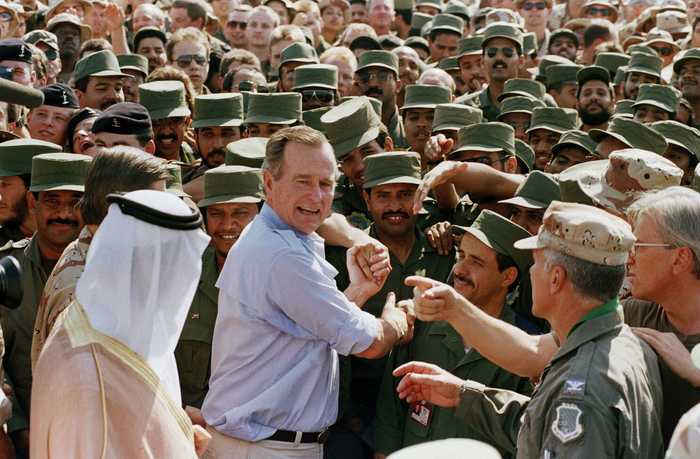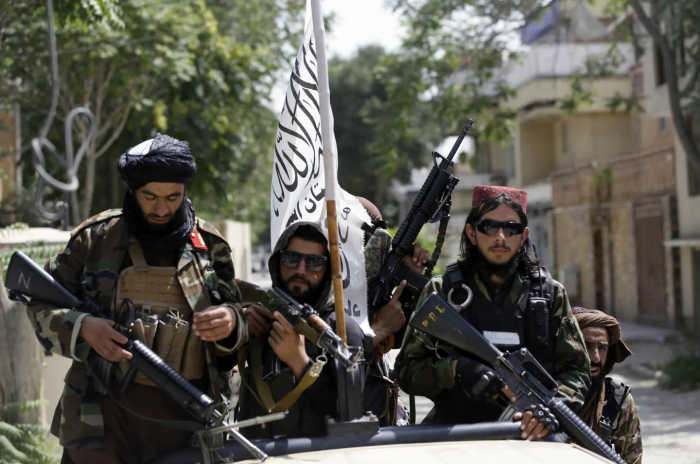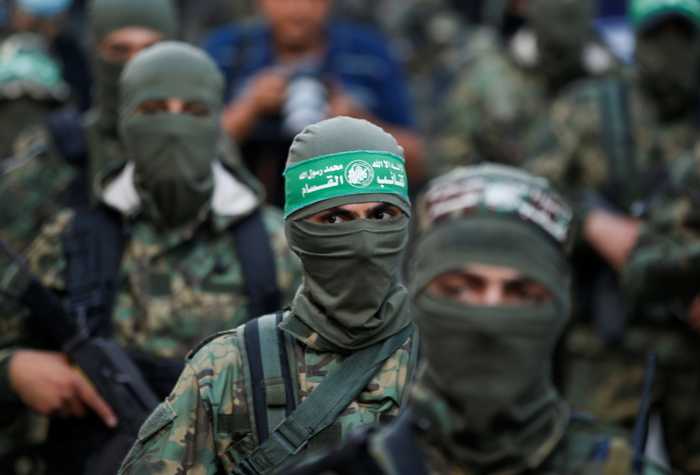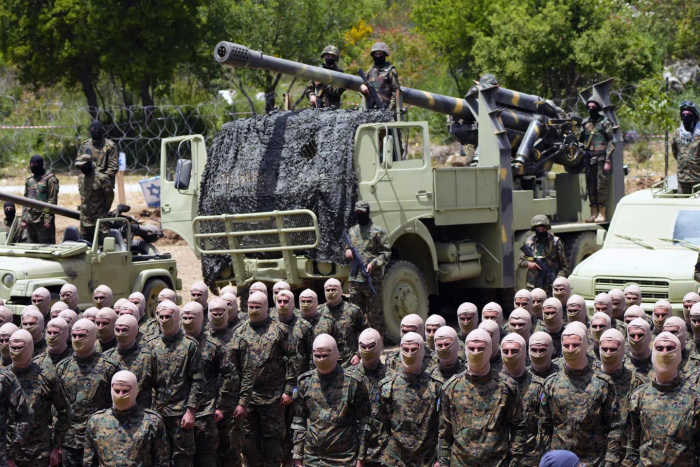Published 21:49 IST, December 18th 2023
US military's footprint in the Middle East: Analysis of an active battle theater
This report provides a comprehensive overview of current US military operations, with a focus on the Middle East, highlighting its geopolitical implications.
Advertisement
The United States military, with its unmatched reach and capabilities, has been actively engaged in battle theatres across the world. From the deserts of the Middle East to the waters of the Pacific, American forces are deployed in a complex web of global operations. This in-depth reportage aims to provide a holistic view of the US military's current engagements, their strategic importance, and their geopolitical implications.
The Middle East has long been a central theatre of US military operations, marked by a complex tapestry of alliances, conflicts, and strategic interests. The roots of the US’ footprint in the region can be traced by to the 70s when the Iranian Revolution led to the overthrow of the US-backed Shah and strained US-Iran relations in 1979.
Advertisement
The Gulf War and the start of American presence

The Gulf War in the 1990s added another scar to the region when the U.S. led a coalition to liberate Kuwait from Iraqi occupation, marking the start of a significant American military presence in the region. A significant portion of the 2000s saw active US military engagement in Iraq and Afghanistan after the US first invaded Afghanistan to oust the Taliban and hunt down Al-Qaeda operatives under their 'War on Terror’ after the 9/11 attacks. Within two years of the involvement in Afghanistan, the U.S. military invaded Iraq in 2003, toppling Saddam Hussein's regime.
However, following an official end of combat operations in 2010, the US transitioned to a role of security assistance in Iraq. Surging military presence in the region, the US aimed to stabilise the situation in the Middle East. However, uprisings across the Arab world during 2011’s Arab Spring led to American involvement in Libya and Yemen, opening two more battle zones for the military.
Advertisement
Middle East’s proxy wars and the rise of ISIS

Yemen had been a key battleground in the fight against Al-Qaeda in the Arabian Peninsula (AQAP), one of the most active and dangerous branches of Al-Qaeda. The U.S. conducted drone strikes and provided intelligence and logistical support to Yemeni forces in their efforts to combat AQAP. Yemen became a proxy battleground between Iran and Saudi Arabia, with the Houthi rebels, who are aligned with Iran, seizing control of significant parts of the country. The U.S. has supported Saudi Arabia in its campaign to counter Houthi influence.
Meanwhile, the American troops also remained on active-duty training and advising Iraqi security forces in their fight against a new threat, ISIS. The rise of ISIS in Iraq and Syria in 2014 prompted U.S. military intervention yet again. ISIS, a radical jihadist group, emerged in the early 2010s, capturing significant territory in Iraq and Syria and declaring a self-proclaimed caliphate. Its brutal tactics and extremist ideology posed a grave threat to regional stability and global security. The U.S. formed a global coalition to combat ISIS, comprising over 80 countries. The coalition aimed to coordinate efforts, share intelligence, and provide military, financial, and humanitarian support to the affected regions.
Advertisement
Defeating ISIS and Taliban's swift resurgence in Afghanistan

The US led an air campaign against ISIS targets in Iraq and Syria, conducting thousands of airstrikes. It also deployed special forces to advise, train, and assist local partner forces in their fight against the extremist group. The regional allies of the American military included support from the Iraqi government and Kurdish Peshmerga forces, providing arms, training, and advisory assistance. The liberation of cities like Mosul from ISIS control was a significant milestone. Notably, the Syrian Civil War has been a focal point for US efforts to combat extremist groups like ISIS. American forces partnered with local Kurdish and Arab fighters to push back against ISIS's territorial gains.
By 2017, with ISIS largely on a weaker foot in the region with dwelling numbers of its fighters, the US-led coalition, alongside local forces, was largely successful in defeating ISIS's territorial control. Around the same time, the US entered negotiations for peace in Afghanistan with the Taliban in 2019. This step eventually led to the Doha Agreement in 2020 following which the US committed to withdrawing its troops from the country. However, peace in Afghanistan was never fully used as in August 2021, after a swift offensive, the Taliban seized control of the country, marking the end of the Afghan government's two-decade struggle to maintain authority.
Advertisement
This development raised questions about the effectiveness and long-term impact of U.S. efforts in the region. The withdrawal of U.S. troops from Afghanistan, which began in May 2021, was seen as a significant turning point. The Taliban's resurgence had immediate consequences for regional stability and security, with neighbouring countries closely monitoring the situation and the U.S. and its allies recalibrating their strategies in response.
A dangerous flashpoint: Resumption of hostilities between Israel and Hamas

Additionally, the May of 2021 also led to the resumption of hostilities between Israel and Hamas in the Middle East. The conflict was characterised by rocket attacks from Gaza into Israel and Israeli airstrikes on Gaza. Stemming from longstanding tensions between the belligerents, the conflict garnered international attention and raised questions about the prospects for a lasting resolution in the Israeli-Palestinian conflict, and rightly so.
Saturday’s recent attack carried out by Hamas on Israeli soil and against Israeli civilians including women, elders and children has prompted an Israeli resolve to wipe Hamas out ‘off the face of the Earth’, as mentioned by Israeli Defense Minister Yoav Gallant. As hostilities surge in the region, the American aircraft carrier USS Dwight D. Eisenhower, along with its carrier group’s warships and fighter jets, is scheduled to depart from Norfolk this week and may be deployed in waters off the coast of Israel, US DoD officials confirmed on the basis of anonymity.
Israeli response and potential threat from Hezbollah

Meanwhile, defence experts expect the Israel Defence Forces (IDF) might advance into Gaza as part of a ground invasion. Maj Gen (Retd) Sanjay Soi told the Republic, “The IDF has pledged retaliation, and it will come. However, what the IDF needs to keep in mind is the probability that a second front might open on the border with Lebanon.”
Referring to the threat from Hezbollah, Maj Gen Soi asserted that the IDF needs to be prepared for a two-front war if it advances into Gaza. Currently, the Israeli government estimates suggest that more than 150 Israeli citizens are being held hostage in Gaza. However, the possibility of an engagement with Hezbollah raises the threat of an all-out war in the region. Hezbollah boasts a more extensive and well-equipped military force compared to Hamas. It has developed a formidable arsenal of rockets and missiles, including precision-guided munitions. This gives Hezbollah the ability to strike targets deep within Israel. Its military training and experience, gained from conflicts like the 2006 Lebanon War, have further enhanced its combat effectiveness. Hamas, on the other hand, has a more limited arsenal and military infrastructure. While it has employed rudimentary rockets in its conflicts with Israel, its reach is not as extensive as Hezbollah's.
Hezbollah's alignment with Iran further complicates the situation, as it contributes to the broader regional competition and rivalry between Iran and Israel. This geopolitical dimension has broader implications for stability in the Middle East. The ongoing challenges posed by Hezbollah in Lebanon, along with the potential for flare-ups in Gaza involving Hamas, remain key issues in regional geopolitics and conflict dynamics.
21:40 IST, October 13th 2023